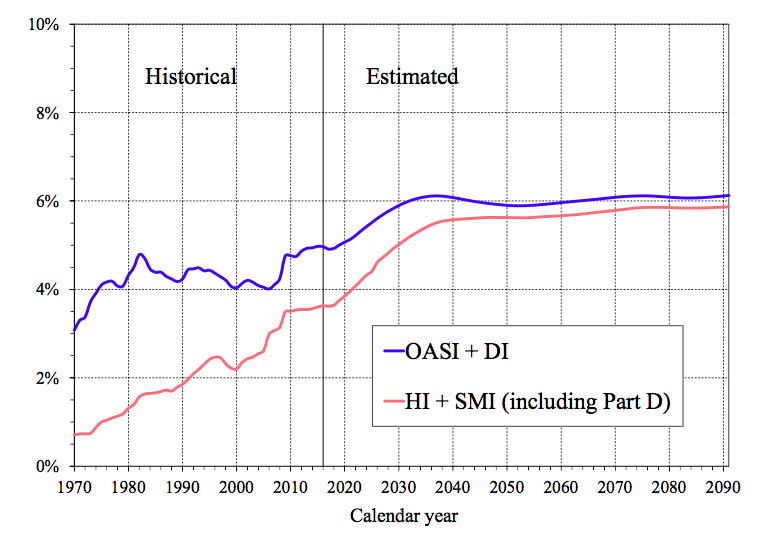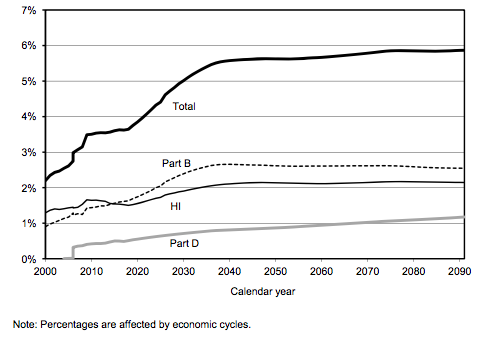Medicare costs are projected to grow from about 3.6 percent to 5.6 percent of the economy from 2016 to 2041, while an Obamacare trigger often referred to by opponents as “death panels” will not be activated, according to the annual report released Thursday by the Social Security and Medicare Board of Trustees.
“These programs are secure and remain secure,” Treasury Secretary Steven Mnuchin said in prepared remarks about Medicare and Social Security, before adding that they faced “long-term issues.”
As the population ages and the Medicare population, which covers adults 65 and older, continues to grow, costs will increase gradually to about 5.9 percent of the gross domestic product by 2091.
The projections show that income will be enough to pay for Medicare’s Hospital Insurance program until 2029, a year later than was projected in last year’s report.
The results mean that the Independent Payment Advisory Board, which some Republicans attacked as Obamacare’s “death panels,” would not be triggered as was projected last year. The healthcare law’s provision calls for a board of experts to be established if Medicare surpasses a certain rate of growth. The panel would be responsible for deciding how to cut Medicare funding for healthcare providers and possibly prescription drugs to slow the growth rate.
The trigger is now projected to occur in 2021.
Health and Human Services Secretary Tom Price would not speculate on what he would do if the trigger were to be reached, noting that the report assumes that Obamacare would continue to operate, despite debated changes in Congress.
“The trigger has not occurred this year and so we’ll cross that bridge when we get to it,” said Price, adding that he hoped tax reform would stimulate economic growth.

Social Security and Medicare cost as a percentage of GDP
After the trust fund has been depleted, 88 percent of scheduled benefits can be paid from dedicated revenue for the remainder of 2029. After that, the share of scheduled benefits will fall slowly to 81 percent in 2041 and rise again gradually to 88 percent in 2091.
The 75-year actuarial deficit in the Hospital Insurance Trust Fund is projected at 0.64 percent of taxable payroll, down from the 0.73 percent that was projected in last year’s report. The Supplementary Medical Insurance Trust Fund, which includes Medicare Part B and Part D that cover medical needs and drug coverage, will be financed adequately throughout the projection period but only because it is financed mostly by general revenues, with another quarter financed by premiums from beneficiaries. Mnuchin said in prepared remarks that the program would be adequately funded “into the indefinite future.”
“This is because current law automatically provides financing each year to meet the next year’s expected costs,” he said.

Medicare Expenditures as a percentage of GDP
But costs will rise in the long term. According to the report, the aging population and rising healthcare costs have driven the costs of the programs from 2.1 percent of GDP in 2016 to about 3.4 percent of GDP in 2037.
“Tens of millions of Americans rely on these programs and it is important that we ensure their long-term stability,” Mnuchin said, attributing some of the future shortfalls to an aging population and “tepid economic growth.” He pushed for tax and regulatory reform measures as an approach to making the programs sustainable.
Price warned that the growth would need to be addressed so that Medicare could be sustainable.
“I’m confident we’ll be able to address the difficult, but necessary, challenges to meet demand,” he said.

